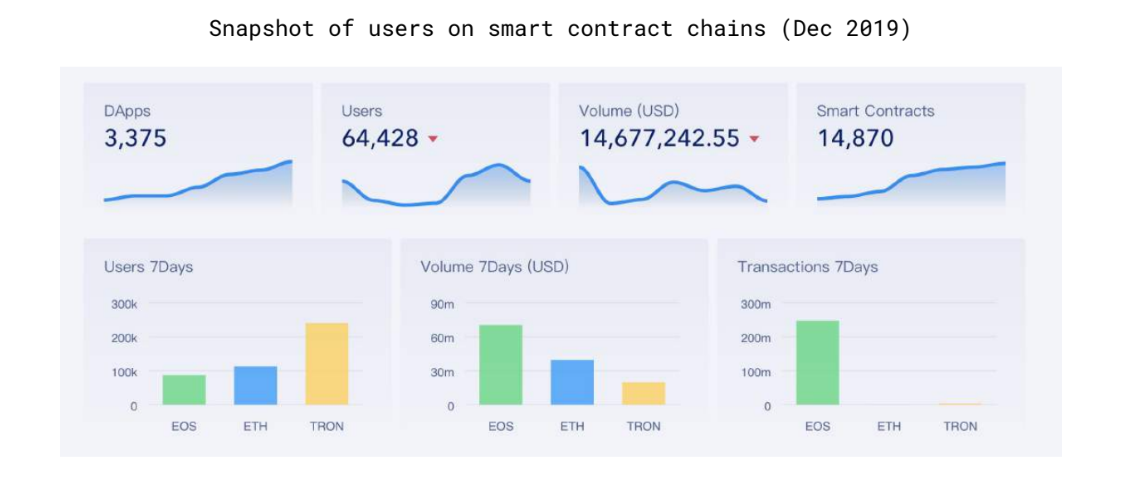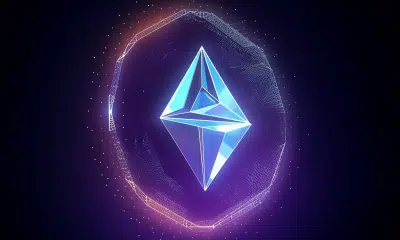Ethereum, EOS, Tron registered steady decline in active DApps in 2019

Ethereum’s blockchain is popular in the industry for the promotion and creation of Decentralized Applications or dApps. EOS and Tron account for the development of DApps as well, and over the past few years, these decentralized applications have carved out a billion-dollar ecosystem for themselves.
Although it was previously reported that 2019 was a lucrative year for Ethereum, EOS and Tron DApps platform, the signs may be turning grey for the future.

Source: 2019/2020 State of Adoption
According to a recent report, in December 2019, Users and Volume across the smart contracts chain of ETH, EOS, and TRON fell drastically.
Individually, Ethereum blocks were consistently getting filled, something that was causing major congestion in the network. Due to the increase in congestion, delay in transactions was taking place, an issue that had been raised by a Redditor last year.
Other blockchains suffered a similar fate as active users per DApp in EOS continued to plummet. The impact was witnessed within the developer’s community as well as new DApps deployed per month in 2019 periodically fell. Monthly active developers followed suit and exhibited a decline as well.

Source: 2019/2020 State of Adoption
Observing each chain individually, it can be identified that EOS recorded the most inconsistent number of active DApps over the course of 2019, whereas Ethereum and TRON managed to maintain a certain level in the ecosystem.
However, depreciation in the percentage of active DApps on each chain was undeniable as each platform, especially Tron and EOS, registered a slump of around 60 percent.
The commotion around DApps is very loud at the moment, but the above data suggests that a point of saturation may overshadow its development for a while. Although Ethereum DeFi apps are finding substantial backing in a financial lending-borrowing medium, a constructive case for DApps based on Tron and EOS seems bleak at the moment.






